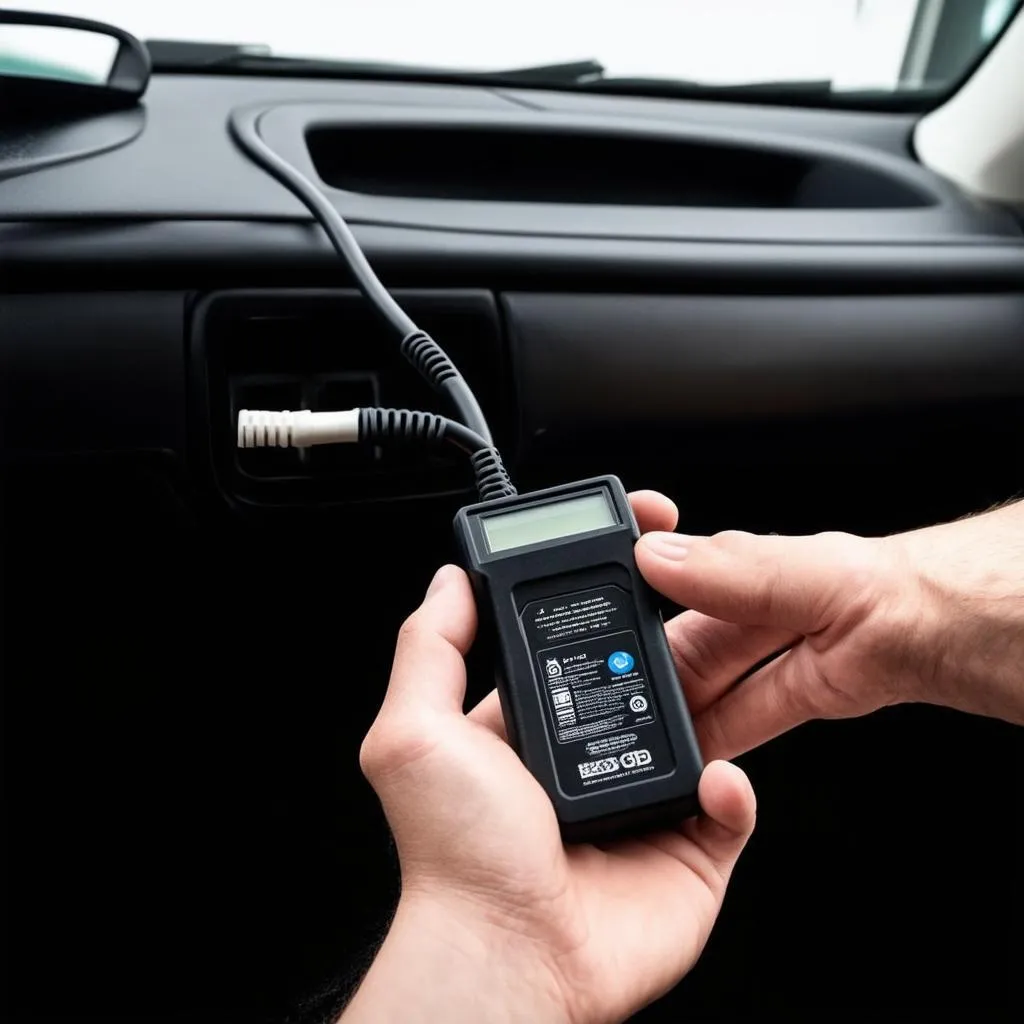“Check Engine” light staring menacingly from your dashboard? Don’t panic! It’s like your car leaving you a cryptic message, speaking in the language of “generic OBD-II codes.” Think of it like this: You’re driving down the road, humming along to your favorite tunes, when suddenly – bam! – that yellow light flickers on. It could be something minor, or it might be a sign of a bigger issue lurking beneath the hood. Either way, understanding those codes can save you time, money, and a whole lot of stress at the mechanic.
What Exactly are Generic OBD-II Codes?
Let’s break it down. OBD-II stands for On-Board Diagnostics, generation two. Essentially, it’s the standardized system used in cars since 1996 to monitor emissions and engine performance. When something isn’t quite right, your car’s computer system stores a “trouble code” in its memory. These codes are like clues, pointing you (or your mechanic) in the right direction to diagnose and fix the problem.
Generic OBD-II codes are standardized across all makes and models, unlike manufacturer-specific codes, which can vary. These codes follow a specific format:
- The first letter: Indicates the system the code relates to (e.g., “P” for Powertrain, “B” for Body, “C” for Chassis, “U” for Network & Vehicle Integration).
- The second character: A “0” indicates a generic code, while a “1” indicates a manufacturer-specific code.
- The third character: Specifies the subsystem (e.g., fuel, air, ignition).
- The final two characters: Represent the specific problem within that subsystem.
For example, a common code you might see is P0420. This indicates a problem with the catalytic converter system efficiency (likely below threshold) on Bank 1.
Decoding the Mystery: Why Generic OBD-II Codes Matter
Remember those cryptic messages we talked about? Here’s where generic OBD-II codes become incredibly helpful:
- Early Detection: Catching issues early can save you big bucks down the road. Just like regular health check-ups help us humans, these codes act as early warning signs for potential car troubles.
- Empowerment: Knowing what those codes mean gives you a better understanding of your car’s health and can help you make informed decisions about repairs.
- Cost Savings: While you might not be a mechanic, understanding these codes can prevent unnecessary trips to the shop or help you negotiate repairs more effectively.
Let’s say you’re experiencing rough idling and see code P0171 (System Too Lean Bank 1). Armed with this knowledge, you can research potential causes (like a vacuum leak) and even attempt some DIY fixes before resorting to an expensive mechanic visit.
 OBD-II Scanner
OBD-II Scanner
Navigating the World of OBD-II Codes
Finding reliable information about generic OBD-II codes is easier than ever. Here are a few resources:
- Online Databases: Numerous websites offer free OBD-II code lookups. Simply enter the code and voila – you’ll find descriptions and potential causes.
- Repair Manuals: A good repair manual specific to your car model will typically have a section dedicated to OBD-II codes.
- Automotive Forums: Online communities can be valuable sources of information, with fellow car owners sharing their experiences and solutions.
Remember, while online resources are helpful, a qualified mechanic can use a professional-grade scan tool, their expertise, and other diagnostic techniques to pinpoint the exact problem.
Beyond the Codes: A Holistic Approach to Car Care
While OBD-II codes are incredibly useful, they’re just one piece of the puzzle when it comes to keeping your car running smoothly. Regular maintenance, such as oil changes, tune-ups, and tire rotations, is essential for preventative care.
In many cultures, cars are seen as more than just machines. They represent freedom, adventure, and even hold sentimental value. Some people even believe in maintaining positive energy within their cars, ensuring a smoother and safer journey. While these beliefs are personal, there’s no denying the importance of treating your car with care and respect, regardless of your cultural background.
 Mechanic Checking Car
Mechanic Checking Car
FAQs: Common Questions About Generic OBD-II Codes
1. Can I drive my car with the check engine light on?
It depends. While some codes might indicate minor issues, others could signal a serious problem that requires immediate attention. It’s always best to err on the side of caution and get your car checked out as soon as possible.
2. Will disconnecting the battery reset the check engine light?
Yes, temporarily. Disconnecting the battery can clear the codes and turn off the check engine light. However, the light will come back on if the underlying problem hasn’t been addressed.
3. Do all cars have the same OBD-II port location?
While the port is standardized, its location can vary slightly depending on the car model. It’s typically located under the driver’s side dash, near the steering column. You can refer to your owner’s manual for the exact location.
Keep Your Car Happy and Healthy!
Understanding generic OBD-II codes is like having a secret decoder ring for your car’s health. By paying attention to those cryptic messages and taking proactive steps, you can keep your car running smoothly for miles to come.
Need help deciphering those pesky codes or need expert assistance with your car’s diagnostics? Contact us on Whatsapp: +84767531508. Our team of automotive specialists is available 24/7 to help you get back on the road with confidence!
Want to learn more about your car’s inner workings? Check out these related articles: